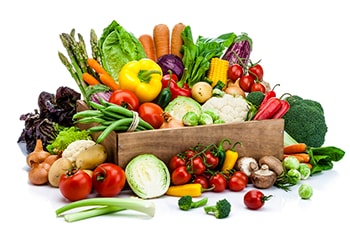Healthy ways at low cost
Healthy ways at low cost

Multiply eating vegetables that don't use flour
Vegetables can be loosely classified as starchy and non-starchy vegetables. Starchy vegetables generally have more carbs and calories than their non-starchy counterparts.
Examples of starchy vegetables include potatoes, corn and navy beans. Non-starchy vegetables include spinach and other dark green leafy vegetables, carrots, broccoli.Filling half of your plate with non-starchy vegetables is a simple way to make your diet healthier. They are low in calories but packed with nutrients, fiber and water
By replacing some of the starch and protein of your meal with non-starchy vegetables, you can still eat a similar amount of food — but with fewer calories
Use small plates and bowls
Believe it or not, the size of your plate can affect how much you eat.
In one study, scientists found that people who ate from large serving bowls ate 56% (142 calories) more food than people who ate from smaller bowls .
In an analysis of 72 studies, scientists found that people consistently ate more food when offered larger portions and plates.
They are an excellent source of omega-3 fatty acids — a type of essential fat that you can only get from the diet. Despite their importance, very few people in Western countries eat enough omega-3 fatty acids (12Trusted Source).
Research has shown that people who consistently eat the most omega-3 fatty acids tend to have a lower risk of heart disease, less chronic inflammation and better mental health (13Trusted Source, 14Trusted Source, 15Trusted Source, 16Trusted Source).
In addition, fatty fish are a great source of B vitamins. This group of vitamins helps the body make energy, repair DNA and maintain healthy brain and nerve function (17, 18Trusted Source).
Aim to eat at least two servings of fatty fish per week. Great examples are salmon, mackerel and herring.
0 Response to "Healthy ways at low cost"
Post a Comment